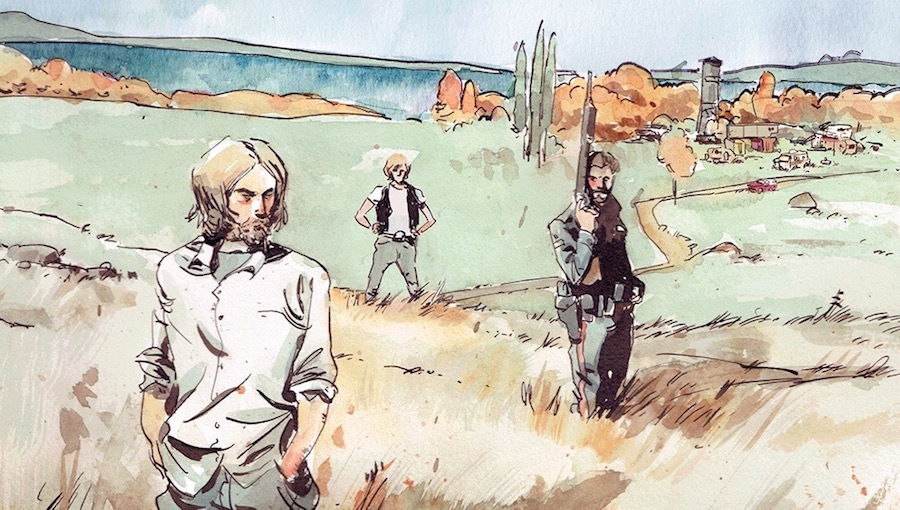For the writers you admire, athletes you love, and politicians you support, I think it’s just as important to understand when one of their endeavors doesn’t seem to work as well as their others and why, as much as it does basking in their victories. Matt Kindt, I feel, is one of the most talented writers in the comic book industry today. He has a handful of comics running right now that I’ve committed my time and emotional investment in, but my first experience with him was the perfect Mind MGMT. I have to say that five issues into Grass Kings, the story has finally ramped up, but it is not connecting with me the way his other books have.
The first problem I’m having is that, while in this issue the leader of the self-sufficient, self-governing, almost sovereign community of the Grass Kingdom, Robert, a tragic figure who has taken to drinking to comfort himself, is being treated like a noble warrior. The thing is we really don’t know that to be true. The comic book hasn’t taken the time to paint him in such a way. In a really beautiful visual by Tyler Jenkins, he’s visually compared to a knight setting off to fight what I’ll refer to as “the man” and then to a handful of other noble warriors whose blood has been shed on this land.
The outside world, specifically the actual Sheriff of the area (“the man”), The Sheriff is portrayed as ruthless in his desire to go in and break this community apart, but he seems like he has every reason to. He has the law on his side. As a reader, you’re stuck between a rock and a hard place; you understand where both sides are coming from, but you also realize that they are going about it in the wrong way.
Instead of finding a way to deescalate the situation, Robert does everything in his power to escalate it. All in all, this feels like a petty squabble that’s gotten out of hand between petty people who have serious anger issues. Kindt wants it to feel grander.
This leads into my second issue with the book: It doesn’t feel grander, because while there are characters in play with specific motivations, we don’t really know any of them well enough outside of those plot necessary motivations to care one way or the other about what happens to them. There’s so much potential here that Kindt is dancing around the edges of and I think it comes down to, for me, that we’ve needed to spend more time with each character. This is first and foremost a drama, letting those dramas unfold so that the characters – even the secondary characters – feel vibrant and alive.
In this issue, as the two sides go toe to toe bringing about the bloody conflicts that have forebodingly and effectively prefaced every issue, you want to be able to connect with someone or something. You have the itch that this is about normal people killing normal people and that itch makes you feel momentarily concerned, which I think is what you’re supposed to feel. But, by this point in the action, that itch should feel like an open wound with salt being poured on it. The cliffhanger at the end ramps everything up to a degree that was confounding. I really wasn’t sure how I was supposed to feel.
There are a few elements I’m still waiting to see how they fit in and will affect the story, like the fact that somewhere in this mix is a serial killer that may have something to do with Robert’s dead daughter.
As for the art, some of Tyler Jenkins’ images are stunning and some become so surreal they are incomprehensible. It’s a weird visual mix that sometimes elevates the dramatic story and other times undermines it, but when he nails it, he nails it.
While this book may not be on par with some of my favorite of Kindt’s recent works, it’s a complex and intriguing idea, very different from anything else out there, and I’m going to stick around to see how some of these threads weave together.

